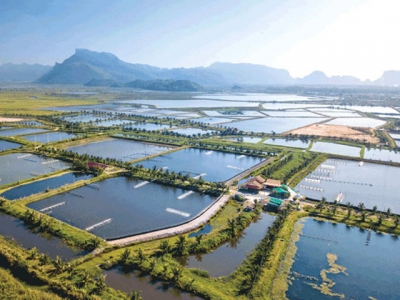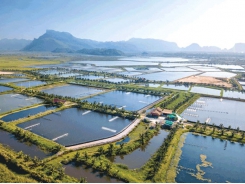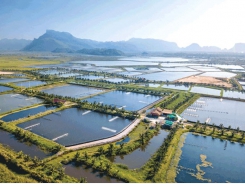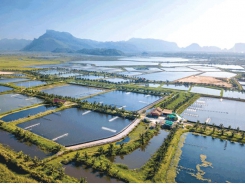Land Based Sustainable Aquaculture Strategy - Part 10

13/ Conservation sites
Good site seletion avoids sites that may impact on areas of high conservation value. Various pieces of legislation protect these sites and are require additional assessment and additional approvals if they are potentially impacted. Conservation sites include:
- Coastal rainforest especially SEPP 26 – Littoral Rainforest;
- Wetlands especially SEPP 14 – Coastal Wetlands, wetlands listed in the Directory of Important Wetlands in Australia should also be considered;
- RAMSAR wetlands. Please note that a project does not need to be in or adjacent to a RAMSAR wetland to have an impact eg. development in a catchment of RAMSAR wetland could significantly alter water quality and quantity in the RAMSAR wetland;
- Habitat of migratory species protected under CAMBA and JAMBA international agreements;
- Critical habitat declared under Part 3 of the Threatened Species Conservation Act 1995;
- DECCW protected areas which include all lands managed by the DECCW and protected under the National Parks and Wildlife Act 1974 such as National Parks, Nature Reserves, Historic Sites, Aboriginal areas, Karst conservation areas, State recreation areas and regional parks;
- Wilderness Areas declared under the Wilderness Act 1987;
- World Heritage Area. Please note that a project does not need to be in or adjacent to a World Heritage Area to have an impact eg. development in a catchment of World Heritage area could significantly alter water quality and quantity in the World Heritage area;
- Marine parks: The zoning of Marine Parks permits aquaculture where it can be demonstrated that the activity is environmentally sustainable and does not impact adversely on the marine park environment or its flora and fauna (see zoning plan for each park);
- Aquatic reserves: These Reserves provide protection for important sensitive fish habitat as well as providing unspoilt natural sites for recreation, education and research;
- Areas identified as high conservation value in regional strategies and regional conservation plans.
Aquatic ecology
You need to consider the risks of the site’s operation to native aquatic species within the catchment. Risks may include escape of stock, spread of disease (discharge water or flood breaches), water use or erosion. These issues are considered in the species selection chapter, however they are also listed here as a site selection factor as the preferred species may have locational constraints.
Predators
The impact of bird or other predators needs to be assessed as their activity can impact significantly on farm operational costs.
Tip!
Avoid sites near where predator aquatic birds congregate as the long term costs, either through loss of fish or in mitigation measures, can be very significant.
14/ Farm preparation before stocking
Tank and pond
Preparation of ponds or tanks for stocking is a step undertaken following total harvest of the culture unit or initial construction and start up. In the case of all in/all out production regimes, this usually follows a farm dryout, repair and maintenance phase.
A pond and tank preparation protocol should be developed with a timetable for activities such as maintenance, repair and reinstallation of all screens, aeration and filtration equipment, pumps and pond and tank structures. Pond preparation usually occurs at the completion of growout season or during cooler non-productive months.
Dryout periods (ponds & tanks)
Generally, complete dryout of the entire farm is favoured for some species, as this practice has shown to reduce disease incidence and result in higher production. At the completion of the growout cycle, the culture unit should be dried completely. For ponds a drying period can be completed in about one month under favourable weather conditions. Following the drying of ponds, the bed is usually tilled (5 to 10 centimetres) to ensure the oxidation of residual organic matter. Excess silt can be removed and pond walls repaired if necessary. Where soils are acidic, agricultural lime may be added. Calcium hydroxide (Ca(OH)²) or calcium oxide (CaO) may be used to sterilise persistent damp patches.
Establishing optimal plankton populations for larvae/fry rearing stages (ponds)
Ponds with newly stocked larvae require microscopic animals (zooplankton) as a food source in order for them to survive. Zooplankton feeds upon phytoplankton (microscopic plants). The latter’s growth is promoted by adding inorganic and organic fertilisers to the pond. This is often more an art than a science, individual farms having unique fertiliser regimes based on their climate, soil types and plankton response.
Recirculating aquaculture systems (RAS)
Pre-activation of the recirculation systems biofilter to stimulate the colonisation of nitrifying bacteria can be accomplished by seeding with appropriate bacteria or fish may be stocked with a gradual increase in feed (over 4 to 6 weeks). Biofilters usually take a period of months before being fully colonised and stable. Therefore, caution should be used when first stocking an RAS.
Pond/tank water management
Intensive aquaculture involves the addition of formulated feeds that result in elevated nutrient levels in the culture system and effluents. The degree of management of water quality will depend upon the type of culture that is undertaken.
Feed (protein) input can alter water quality by increasing turbidity (algae and suspended solids), ammonia, nitrite and nitrates. These processes can in turn, influence levels of DO, pH, alkalinity, carbon dioxide, hydrogen sulfides and other parameters.
Pond aquaculture usually employs a ‘static’ water rearing method where water is required for initial filling and then only to replace evaporation, seepage and water exchanges. The pond environment usually assimilates wastes generated from feed input. Water quality is more problematic under summer conditions due to high feed inputs and elevated temperatures.
In open culture units, the process of water exchange removes the metabolites.
Water quality management is more intensive in an RAS than pond aquaculture. RAS require sophisticated life-support equipment to maintain water quality. This includes swirl separators, biofilters, other filter units, pH buffering systems and de-gassing chambers. All tank facilities operate under partial water exchange to replace water lost through backwashing, cleaning and husbandry processes. Daily water exchange could range from 5% to 25% depending upon the system design and operation.
Related news
Tools

Phối trộn thức ăn chăn nuôi

Pha dung dịch thủy canh

Định mức cho tôm ăn

Phối trộn phân bón NPK

Xác định tỷ lệ tôm sống

Chuyển đổi đơn vị phân bón

Xác định công suất sục khí

Chuyển đổi đơn vị tôm

Tính diện tích nhà kính

Tính thể tích ao




 Land Based Sustainable Aquaculture Strategy - Part 11
Land Based Sustainable Aquaculture Strategy - Part 11  Land Based Sustainable Aquaculture Strategy - Part 9
Land Based Sustainable Aquaculture Strategy - Part 9